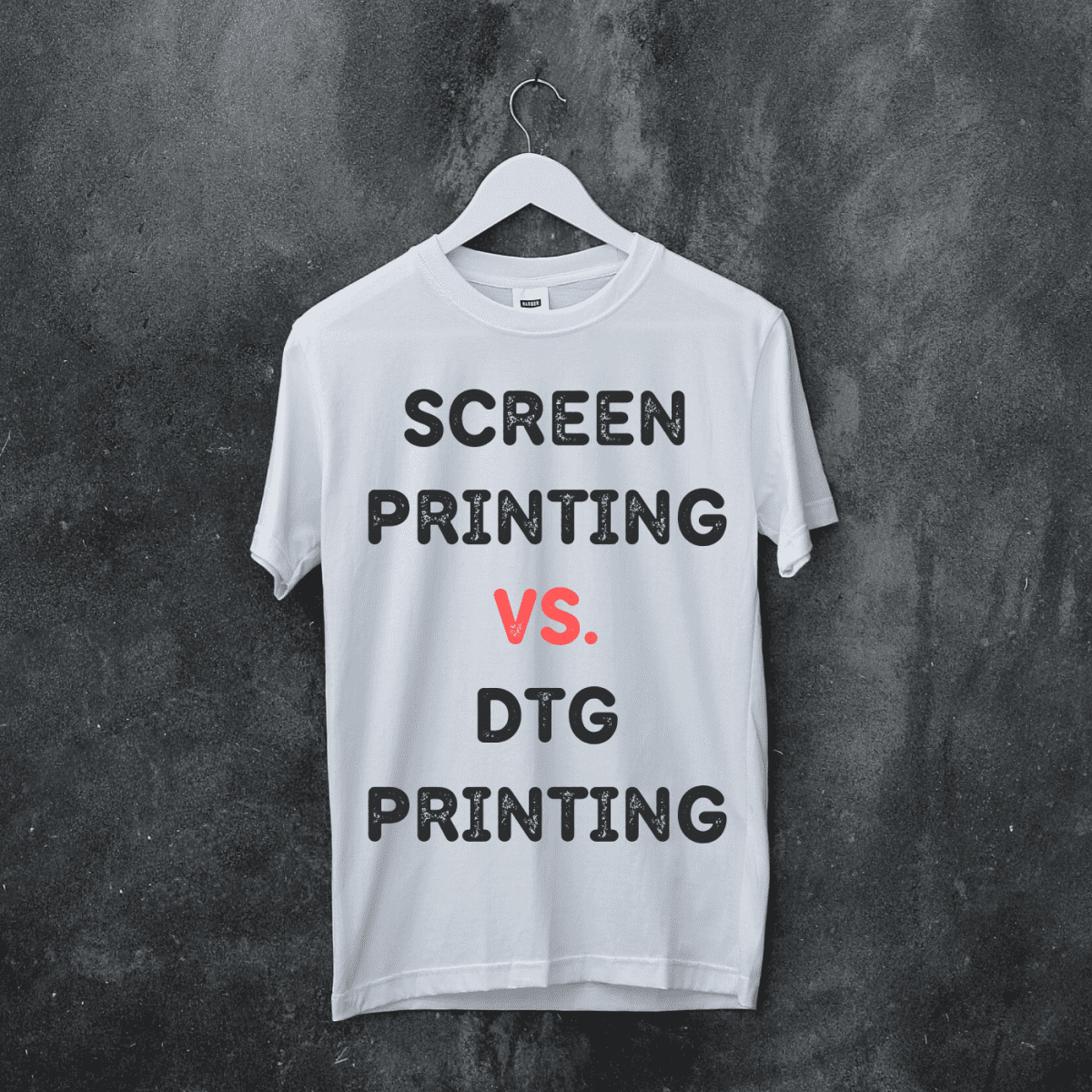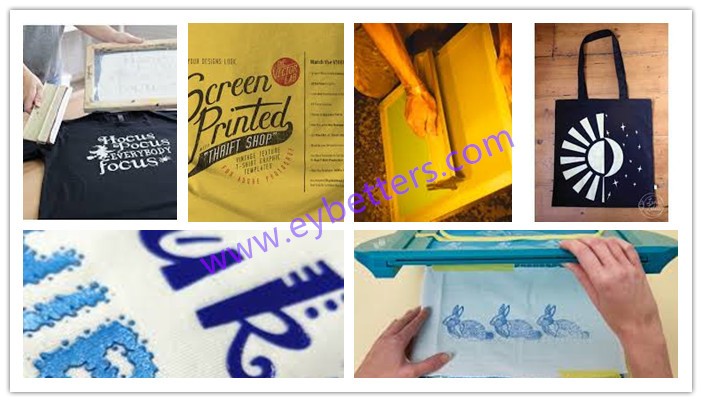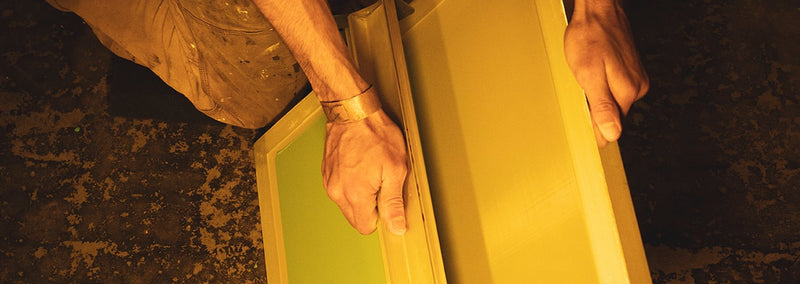Tx Tees for Dummies
Tx Tees for Dummies
Blog Article
The Ultimate Guide To Tx Tees
Table of Contents3 Simple Techniques For Tx TeesThe Basic Principles Of Tx Tees Some Known Facts About Tx Tees.10 Easy Facts About Tx Tees DescribedAll About Tx TeesThe Best Guide To Tx TeesWhat Does Tx Tees Do?
That brings your total to approximately $1,900 gross and delivery. Build up various other prices, like the number of utilities it takes to run the store and the price of ink and solution per style. screen printing shop. Take the print listed below. This is a one-color photo, so the expense of ink per tee shirt is roughly 20 cents.The solution needs to only be a couple of cents because you 'd just need to layer one display for this job. Normally, printers try to make up to 45% earnings on a print job.

With DTF, you can publish a handful of t shirts, or just one. Utilize the very same calculator as the area over to calculate just how much revenue you would certainly use DTF transfers. Compare the costs and revenues to whichever approach talks best to your setup and process. Both screen printing and DTF have their specific niches worldwide.
Tx Tees Fundamentals Explained
The very best way to understand? Ask about and see what print stores like yours are doing. custom cap printing. Attempt both out and see which you like far better
When you're choosing what sort of printing technique to utilize for publishing your art work designs on your garments, it's essential that you understand the distinctions in between these 2 strategies so you can optimize outcomes while minimizing costs. Screen printing is the most typically utilized method for publishing styles on fabrics.
DTG printing is likewise called place or straight to garment printing due to the fact that it publishes just what is required as opposed to making a screen as screen printers do. https://www.avitop.com/cs/members/txtees02.aspx. Display printing functions by screen filler squeegee display printing ink screen mesh display, then moving the image to garment making use of warm and/or pressure
The DTG printer utilizes unique dye-sublimation inks that are applied right into a pre-designed image by an electronic printing system. The inks end up being component of the fabric, permitting for dynamic shades and outstanding detail. It's likewise recognized as area or straight to garment printing because it publishes just what is needed as opposed to making a screen as screen printers do.
The smart Trick of Tx Tees That Nobody is Discussing
First, it's much faster - you can print a fullcolor picture in mins, as opposed to hours for screen printing. Second, there's no established time or prices involved - you can print any design you like, without having to produce a screen first. Third, there's no waste - due to the fact that display printers display print one style each time, they need to screen each color separately.
The paper is very expensive and can only be used once. Once it's printed on, it has actually to be discarded. - The initial purchase rate is lower than the in advance financial investment of DTG printers- You can publish multi-color styles one screen each time rather than having to print each color independently like DTG printing.

The 7-Minute Rule for Tx Tees
Rather of making use of screen mesh as screen printers do, color sublimation printers make use of laser technology to move your photos onto garments or paper. A heat process moves the color from its solid-state straight into the gas phase which consequently integrates it onto fabric substrates when they are quickly warmed to heats under high pressure.
Sublimation printing is green. It uses less water than screenprinting, and since it does not entail the usage of hazardous solvents, it's risk-free for all sorts of garments. The color sublimation inks are also odor free when treated, unlike display printers that utilize unsafe chemicals throughout the display printing procedure that leave an undesirable smell.
They also save money on costly equipment like exposure units because dye sublimation printers don't need a UV exposure system or a flash remedy oven that is typically utilized in screen printing (screen printing shop). What is direct to garment printing (DTG Printing)? DTG printing is an electronic screenprinting procedure that prints directly onto textile utilizing specialized inkjet printers
Indicators on Tx Tees You Should Know
DTG printing supplies several advantages over conventional screenprinting, consisting of the capability to print photo high quality photos, better shade vibrancy, and the ability to print layouts on darker textiles. DTG printers function by heating the textile ink till it becomes a gas. The gas then penetrates the material, bonding with the fibers to create an irreversible print.

Display printers just prepare their screen then start printing till they lack item or ink.- There is a variety of seasoned display printers around the world, which can be practical for newbies. - It's a slower procedure - screen printers typically have to wait for the ink to completely dry prior to they can publish the next color- Display printers need hands-on labor, so there's a higher learning contour and it takes longer to create a high-grade style- Screen printing isn't as accurate as DTG printing, so you might get some "bleeding" of shades from one component of the image onto another otherwise done properly.
Little Known Questions About Tx Tees.
However, rather of using screen mesh as display printers do, dye sublimation printers make use of laser innovation to move your images onto garments or paper. A warm procedure transfers the dye from its solid-state straight into the gas stage which in turn merges it onto fabric substrates when they are swiftly heated to high temperature levels under high pressure.
Sublimation printing is eco-friendly. It utilizes much less water than screenprinting, and since it does not involve using hazardous solvents, it's secure for all kinds of garments. The dye sublimation inks are likewise odorless when treated, unlike display printers that utilize unsafe chemicals during the display printing process that leave behind an undesirable odor.
They also conserve cash on pricey devices like direct exposure devices because color sublimation printers don't need a UV exposure system or a flash treatment stove that is usually made use of in display printing. What is straight to garment printing (DTG Printing)? DTG printing is a digital screenprinting process that prints directly onto fabric utilizing specialized inkjet printers.
Not known Details About Tx Tees
DTG printing offers many advantages over traditional screenprinting, consisting of the capacity to publish photographic quality images, better shade vibrancy, and the capability to print designs on darker textiles. DTG printers function by heating up the textile ink till it becomes a gas. The gas then permeates the textile, bonding with the fibers to develop a long-term print.
Report this page